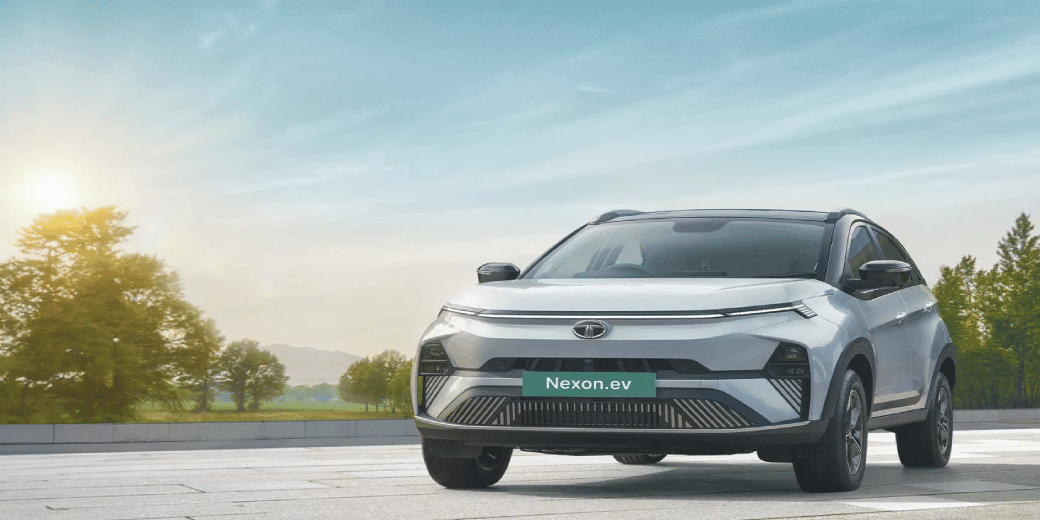After price cuts, EVs easier on pocket
Tata Motors has recently slashed the prices of its two electric cars Tiago and Nexon by up to Rs 1.2 lakh.
- Sandeep Grover
- Last Updated : March 23, 2024, 23:25 IST

Tata Motors has recently slashed the prices of its two electric cars Tiago and Nexon by up to 1.2 lakh rupees. How cost-effective have EVs become compared to petrol with this reduction in prices from Tata? How big is the EV segment market in the country? And based on these, which shares should one invest in? Let’s understand.
Tata Motors has reduced the price of Tiago EV by Rs 70,000 and Nexon EV by up to Rs 1.2 lakh. The ex-showroom price of Tiago EV now starts at INR 7.99 lakh and Nexon EV starts at INR 14.49 lakh. After the price reduction, Tiago EV, starting at Rs 6.99 lakh, has become the second cheapest electric car in the country after the compact MG Comet priced at INR 6.99 lakh.
With this price cut from Tata Motors, buying an electric car has become easier for Indian customers. Along with this, recovering the initial extra cost of EVs compared to petrol cars will also take lesser time for customers.
Compared to petrol cars, it is very important to consider the long-term savings on fuel and maintenance of EVs. Let’s understand this with an example. The ex-showroom price of the petrol model Tiago XTA is Rs 6.95 lakh and the price of the electric model Tiago EV XT medium range (250 km) is Rs 8.99 lakh. While the registration cost is lower for EV models, the insurance is more expensive. Adding all these, Tiago EV has become costlier by approximately Rs 1.6 lakh.
The running cost of EVs, i.e., fuel and other expenses, has decreased in recent times. Running cost can be understood based on daily travel. Considering a distance of 30 km every day, i.e., 33,000 km in 3 years, the cost of insurance premium, service, and fuel or charging cost will be Rs 2.41 lakh for Tiago XTA whereas, it will be only Rs 56,487 for EV XT. Looking at these factors, EVs work out to be approximately cheaper by Rs 26,000 than petrol models.
This makes it clear that while EVs may initially seem expensive, they prove to be cost-effective in the long term. If your car runs 40 km daily, it will take over three years and four months to break even with Tiago EV. Driving 30 km daily, you will recover your extra cost in four and half years. Similarly, with a 15 km journey, your car will break even in 6.8 years. It is worth noting that some battery modules need to be replaced after 8 years or 1.6 lakh km.
Now, let’s talk about charging, infrastructure, and challenges. The convenience and cost of charging an EV can vary in different places in India. The cost of charging per unit at public stations ranges from Rs 5 to 15. This is more expensive for fast chargers. On the other hand, if there is infrastructure at your home or society, the cost of charging will be between Rs 2 to 9 per unit. Due to lower rates of domestic electricity compared to commercial, charging at home turns out to be cheaper. However, it takes more time.
Talking about challenges, the number of charging stations outside cities is currently limited which makes it challenging to use electric cars for long trips. Lack of awareness and servicing about EV batteries, and fewer service centers compared to petrol cars add to these challenges.
According to auto expert Vikas Yogi, buying an EV has become cheaper after the recent price cut, and recovering the additional cost compared to petrol will happen sooner, provided you buy an EV costing less than 10 lakh, drive 50-60 km daily, and charge at home.
Overall, the prices of EVs are decreasing in the country, and there has also been a decrease in insurance costs… With the increase in the number of charging stations, there is hope for EV maintenance to become cheaper, which could lead to an increase in the number of these cars on the roads.
Download Money9 App for the latest updates on Personal Finance.
Related
- मैक्सिको के 50 फीसदी टैरिफ पर सरकार ने शुरू की बातचीत; जल्द समाधान की उम्मीद
- इंडो- US ट्रेड डील में पहले हट सकती है पेनाल्टी, रिपोर्ट में दावा
- रुपये ने फिर बनाया ऑल टाइम लो, जानें क्या है वजह
- बैंक कस्टमर के लिए बड़ी खबर, RBI हटाएगा ओवरलैप फीस,
- मैक्सिको ने अपनाई US जैसी पॉलिसी, 1400 से ज्यादा प्रोडक्ट लगाया भारी टैरिफ
- SpiceJet विंटर सीजन में जोड़ेगी 100 नई फ्लाइट्स! Indigo के कटे रूट्स का करेंगी भरपाई

